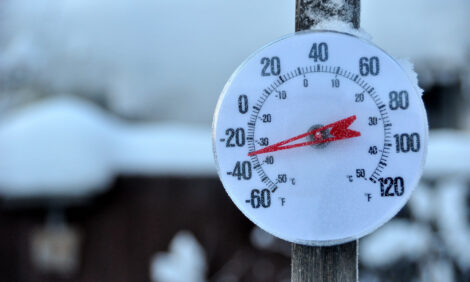



Preparing a Farrowing Arc
A well prepared and organised farrowing paddock will make outdoor sow and piglet management easier and more productive, advises BPEX.Providing the correct environment for both sows and piglets in the farrowing arc will help to minimise mortality and maximise growth rate of piglets and maintain the sow in good condition ready for the next cycle.
| Equipment Required | Personal Safety |
|---|---|
|
|
|
|
|
|
|
Preparation
After weaning:
- Move the hut to a fresh piece of ground within the farrowing paddock and either burn the original bed or remove from the paddock
- Weather permitting leave the hut upside down so that the inside is exposed to sunlight
- These two procedures are referred to as “tip and burn” and they reduce disease incidence
- If appropriate wash and disinfect the hut
- Repair any broken or damaged areas of the hut to reduce the risk of physical injury to the sow and/or piglets and of chilling as a result of holes and draughts
Outline of the Work
Before the sows are moved into the farrowing paddocks:
- Remove any large stones from inside the arc and check it is situated on a fresh piece of ground
- Consider ventilation, season and prevailing wind direction when deciding which direction the hut should face
- Place wads of dry wheat straw (or chopped barley straw) in the hut
- Placing the wads on the ground of the intended hut site before you tip the hut back over will save time
- If there are any ruts under the hut dig these in to reduce draughts, this involves spreading soil over the gaps between the ground and the hut
- Place the fender near to the hut, unless drop front fenders are used in which case these can be attached and the front dropped
- Check the back vent to ensure that it is still in place after moving the hut and adjust according to the weather
- Double check the water provision and fence lines before the sows are moved into the farrowing paddocks
- If there is variation between the size of huts try to allocate gilts and smaller sows to the smaller huts
Prior to farrowing:
- Check the back vent and adjust according to current weather conditions
- Check the bed prior to the expected farrowing date; if straw levels have reduced add some more, but not too much
- If the bed is uneven, flatten out the straw
- Check again for draughts and plug any holes with straw or dig soil over them
- Check when to attach the fender and any door curtains with your line manager
- If the fenders do not fit properly use cable ties to ensure there is a flush fit between them and the hut
 ‘Tip and burn’ reduces disease risk
|
 Check straw levels prior to farrowing
|
 Check water provision
|
 Use tree ties/cable ties to attach old fenders to huts
|
Further information
The Code of Recommendations for the Welfare of Livestock (Pigs) has specific recommendations for pigs kept in outdoor husbandry systems including:
- Farrowing pens where sows are kept loose must have some means of protecting the piglets, such as farrowing rails
- Farrowing arcs should be sited on level ground to reduce the risk of overlying. Suitable restrainer boards should be used to prevent very young piglets from straying during the post-farrowing period
- Farrowing arcs should be insulated and have provision for some degree of extra ventilation such as manually controlled flaps.
September 2008






